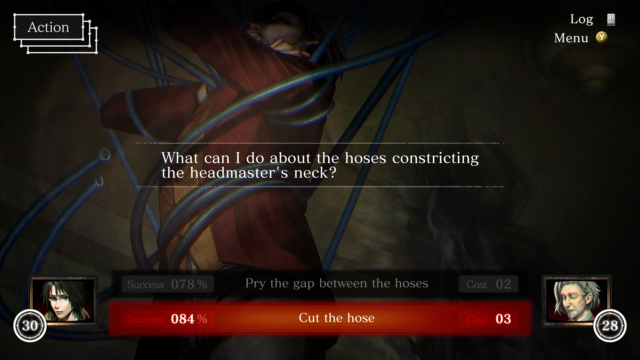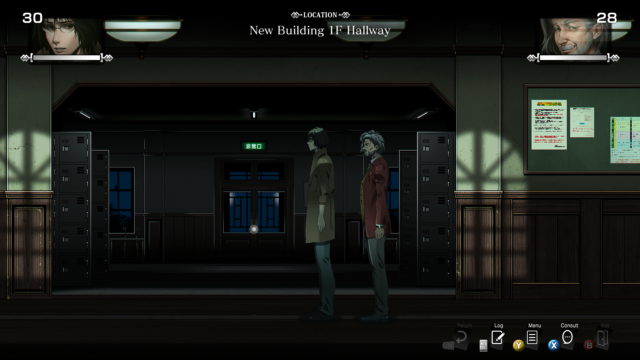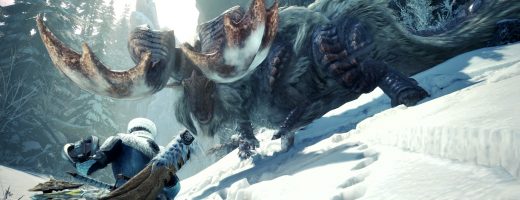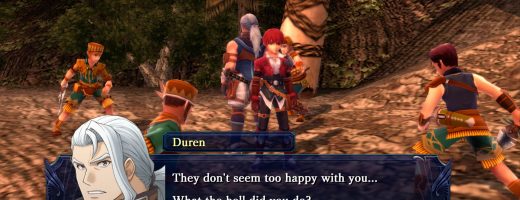Adventure Corner ~ Spirit Hunter: Death Mark II
Welcome to Adventure Corner, a column where members of the RPGamer staff can give their thoughts, impressions, and pseudo-reviews for various adventure titles that don’t come under our usual coverage. Adventure Corner is aimed at delivering opinions on a wide range of titles including visual novels, point-and-click adventures, investigative mysteries, and so forth.
In this edition of the column we take a look at Experience’s suspense-horror title Spirit Hunter: Death Mark II.
Spirit Hunter: Death Mark II
The application of horror in video games is fascinating as the medium has the unique distinction of directly involving the participant through their interactions. Unlike when one is watching a movie and witnessing the characters on the screen going through traumatic experiences, or reading a book and visualizing the main character’s despair, they can easily detach as it’s not happening to them. However, with video games, the player is directly involved and put in the role of the main character trying desperately to survive. There are a variety of ways horror is executed, such as building atmosphere and tension, excess of blood and gore, and then there’s the option of cheap jumpscares. The Spirit Hunter series has always taken an interesting approach towards horror by depicting the spirits as sympathetic and needing to be saved just as much as the main cast, rather than being cold, calculated killing machines. Spirit Hunter: Death Mark II continues this tradition.
Kazuo Yashiki, the protagonist of the first game, returns as the “Spirit Doctor”. This time around he is hired by the principal of Konoehara Academy to investigate the rumors of a spirit haunting the school — known as the Departed — after a student goes missing. Although the principal is completely skeptical of all things supernatural, the rumors reach a point where they become difficult to ignore, and with notices being left informing of the next target, he is left with no choice but to hire the services of the protagonist. Once the investigation begins, Kazuo quickly learns the Departed is potentially using other spirits to target the students, with multiple spirits that must be exorcised before he can confront and reveal the mystery behind the Departed. There are connections to the first Death Mark game, with previous “mark bearers” returning to help resolve the mystery. However, the game does a great job of explaining events from the first Death Mark, so there isn’t a need to play the first game to understand what’s going on, although it’s still recommended as it adds to the experience.
Like prior entries in the series, the story sections unfold in visual novel format with multiple decisions being made along the way. Where this game differs from its predecessors, however, is the investigation scenes are done in 2D, allowing players to see the characters on screen while searching for items and information. There are still sections that require first-person point-and-click investigations to be done for certain areas. Kazuo won’t be alone during his search as players have the option of having one of two allies to help him in every chapter, each one having their own set of stats and abilities. There are events where multiple choices must be made to progress known as Suspensive Acts, which require players to utilize all the information and items found during the investigation against the spirit; each decision made costs action points, which can be increased with items and leveling up. While another thing to be wary of when making decisions is the success rate, a high success rate does not necessarily mean the correct decision was made. It’s possible to be successful in an action and make the wrong decision, or fail with a correct decision. Failure to exorcise each spirit properly results in the gruesome death of one of the companions at the end of the chapter, making it vital that due diligence is done before completing every section.
One of the things that makes the title so enjoyable is the relatability of every character’s reactions to the situations they find themselves in, combined with the fact almost everyone in the game looks like an average person rather than an anime trope, with the exception of the idol character. Kazuo Yashiki in particular embodies the everyday-looking person. Every time he’s confronted with a situation, he’s not ashamed to admit being extremely frightened. The closest thing to a gung-ho action-type character is Satoru Mashita, a former police detective turned spirit-hunting private detective after the events of the first game.
A lot of the violence depicted in the game is visceral and grotesque, with the art style enhancing these effects. It cannot be emphasized enough how much of a fantastic job the artists have done. It becomes apparent within the first couple of hours of playing the game, how much of a massive fan the developers are of body horror. One of the spirits in the game uses hosepipes to decapitate and gouge people, another spirit can force scissors to come out of body parts, rendering its victims into human hedgehogs, while one transforms body parts into mushrooms. Make no mistake though, this game has much more going for it than gore.
The characters are well-written and the interactions between the mark bearers and Kazuo in particular are quite amusing at times, which increases the desire to prevent their deaths. What makes the Spirit Hunter series stand out from other horror games though, is the spirits encountered in the game aren’t designed to be destroyed or hated. Every investigation conducted delves deeper into the lives of the spirits when they were still alive, revealing the trauma and suffering they’ve had to endure before their tragic deaths, which resulted in them becoming vengeful spirits with grotesque features as a result of the grudges they hung on to in death. They exist to be saved from their hatred and anger so that they can move on properly after being purified.
The game does a brilliant job of creating atmosphere and building tension, which is all the more disappointing whenever it feels the need to resort to cheap jumpscares. A lot of the time, they’re more comical than scary. However, the jumpscares are optional and can be turned off on the menu screen. Another detractor is the out-of-place fanservice that occurs now and then, with one scene that particularly sticks out being female characters taking off their clothes and striking bizarrely provocative poses when they end up covered in insects. In addition, there’s a lot more handholding involved compared to previous games when it comes to figuring out how to purify the spirits to avoid getting any of the allies killed. Previously, players were expected to figure out the appropriate answers and items to use based on the spirit’s personality, whereas this time around all the instructions on how to save the characters feel ham-fisted.
Although every character in the game has a voice actor, their usage is minimal. A lot of the acting seems to be reduced to the odd sound of dissatisfaction, expressing shock, screaming from pain, and gasping in fear. The only time there is fully voiced dialogue is during the prologue and epilogue; otherwise, voiced dialogue is next to non-existent.
Multiple endings can be unlocked depending on whether or not players manage to rescue all of the characters and purify all of the spirits; even a single character’s death results in a bad ending. The true ending leaves a satisfactory conclusion, setting up another game in the future, while an extra chapter is unlocked upon completion and is a nice little easter egg for anyone who played Spirit Hunter: NG.
Spirit Hunter: Death Mark II demonstrates that the Spirit Hunter series continues to evolve with every entry. The writing, atmosphere, gameplay, character interaction, and art are all notable improvements. Spirit Hunter: Death Mark II is a great entry in the series with its unique approach to horror and stands out in comparison to other titles in the same genre.









Recent Comments